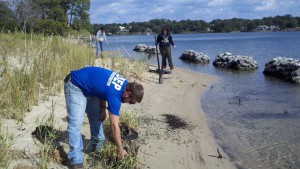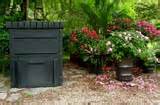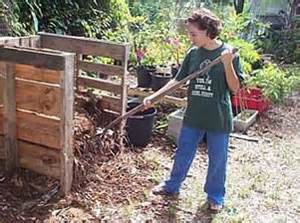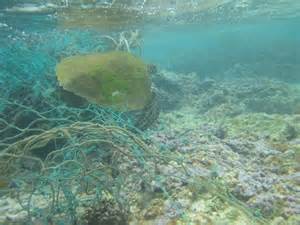In the last edition in this series we discussed some of the issues and problems our estuaries are facing. For the final edition for National Estuaries Week we want to leave you with some ideas on you can help improve things.
The first issue we dealt with was eutrophication – or nutrient overloading. The primary nutrient we have issues with in this part of the panhandle is nitrogen. Nitrates can converted from other forms of nitrogen and can be discharged directly into the water. Common sources are leaf litter, animal waste, commercial fertilizers, and human sewage. Most of this is discharged into our waters via stormwater runoff. This runoff occurs from our properties (due to the lack of natural vegetation holding it) and from stormwater drains (where it is directed through our engineering projects).
One method of dealing with this problem is restoring the shoreline back to its natural state. This is called Living Shorelines and they are being restored all over the country. In most cases locally Living Shorelines would be restoring salt marshes to our shorelines. There are some issues with this. It lessens the amount of open beach you have to enjoy. You have to purchase special plants to do this, and it may require a permit from the state of Florida. Permits are required only if you are planting at or below the mean high tide line; all submerged lands are actually the property of the state of Florida. Permits for Living Shorelines can be obtained from the Florida Department of Environmental Protection.
The first question you would want to ask when considering a Living Shoreline for your property is whether there was a salt marsh along your shore historically. Salt marshes require low energy beaches to establish themselves and your location may not be such. If you are not sure you can contact the Sea Grant Agent in your county to provide assistance with that determination. If you feel your property would support a Living Shoreline then you will need a permit. There is the “long form” and the “short form” permit. The “short form” obviously what you want and it costs less also. However certain criteria must be met in order to be exempt from the “long form”. To determine whether you are exempt from the “long form” visit https://www.flrules.org/gateway/RuleNo.asp?title=ENVIRONMENTAL%20RESOURCE%20PERMITTING&ID=62-330.051 Click “view rule” and scroll down to (12)(e). If you feel that you qualify for the exemption then it is as simple as completing the form and submitting your check. You should have your permit in just a few weeks. If you do not qualify then it is recommended that you contact the Florida Department of Environmental Protection for advice on moving forward. (850) 595-8300.
Whether you qualify for a Living Shoreline or not – or even if you do not live on the water – there is a landscaping program that you can adopt that will help a lot. It is called Florida Friendly Landscaping. This UF/IFAS program helps homeowners select the “right plant for the right place”. Basically the idea is to landscape your yard with native plants that require little or no fertilizing or water. Not only does this program help our estuaries it saves the homeowner money. One of the first things you will want to do when planning a Florida Friendly Landscape is have your soil tested. The county extension office provides this service for about $7. If interested contact your county extension office about where to pick up the soil testing sample bags. Rain barrels and rain gardens are also good ways to reduce water runoff and save water for those times when you might need it. A trickle hose connected to a rain barrel can reduce runoff and your water bill.
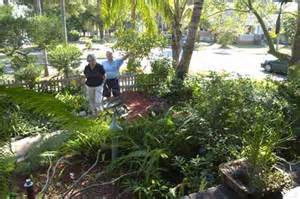
Florida Friendly Landscaping involves using native plants that require less water and fertilizer.
Photo: Southwest Florida Water Management District
We are not certain how much of the animal waste is in fact human but we do know that much of the human waste is from septic tanks. If you have a septic tank – maintain it. Most of the problems come from those that are not maintained well. If you can connect to a sewer line we recommend you do this. The sewer is not without its problems but the problems are much reduced. If you own a pet – clean up behind them.
The leaf litter problem is just that… a problem. Within the city limits many municipalities will collect your yard waste. In Pensacola they do so using a large “claw” however this claw leaves large holes in your yard – so people place the yard waste in the street. Doing this encourages runoff into the bay and the problems we have already discussed. So many will bag it. In Escambia County the yard waste is converted into mulch and is free to the public. However if the yard waste is placed in plastic bags they cannot do this. It’s tough problem. One answer is to develop your own compost pile and dispose of your yard waste there. Your county extension office can help you with different methods of composting and help you select the method that is best for you.
All of these suggestions about can reduce nutrients and bacteria in our waterways that contribute to fish kills and health advisories. It will reduce turbidity, which will help seagrasses, and actually Living Shorelines can reduce shoreline erosion.
These same practices can not only improve water quality they could help restore some of our declining fisheries. Living Shorelines provide needed habitat for many commercial and recreational valuable species. As mentioned, these projects will remove much of the sediment improving water clarity to a point where seagrasses can restore themselves and who knows… maybe the scallop will return. On the subject of scallops, Florida Sea Grant conducts scallops surveys in some of panhandle estuaries in the summer. You can volunteer to be a scallop surveyor and assist with data collection that could support a scallop restoration projects. When fishing follow the regulations. They may seem unfair and out dated but know that fisheries managers are trying to get it right and your cooperation will certainly help develop a sustainable fishery for years to come.
The issue of garbage is another tough one. We have been conducting educational programs for decades trying to reduce the amount of solid waste – it’s still there. Many of the local residents are pretty good at taking their trash with them and recycling monofilament fishing line… but not all. Encourage your friends to “take it with them” and “leave no trace” when they go home each day. Out of town visitors can be a problem. Local education from all of us should help some. Participate in one of the CleanPeace’s Ocean Hours. If in the Santa Rosa and Escambia area contact the Sea Grant Agents from those counties for more information. If from another county, contact your local county extension office for information on beach clean ups.
Our estuaries have improved significantly from where they were in the late ‘60’s and early 70’s. A little on our part now we can improve them even more. We hope you have learned something new about your local estuary during National Estuaries Week. We hope you will take the time to enjoy these great bodies of water and do what you can to protect for future years.
- St. Joe Red Tide Claiming Terrapins - December 15, 2025
- The 2025 Snake Watch Report for the Pensacola Bay Area - December 15, 2025
- Rattlesnakes on Our Barrier Islands; Part 2 – Prey Selection - December 15, 2025

